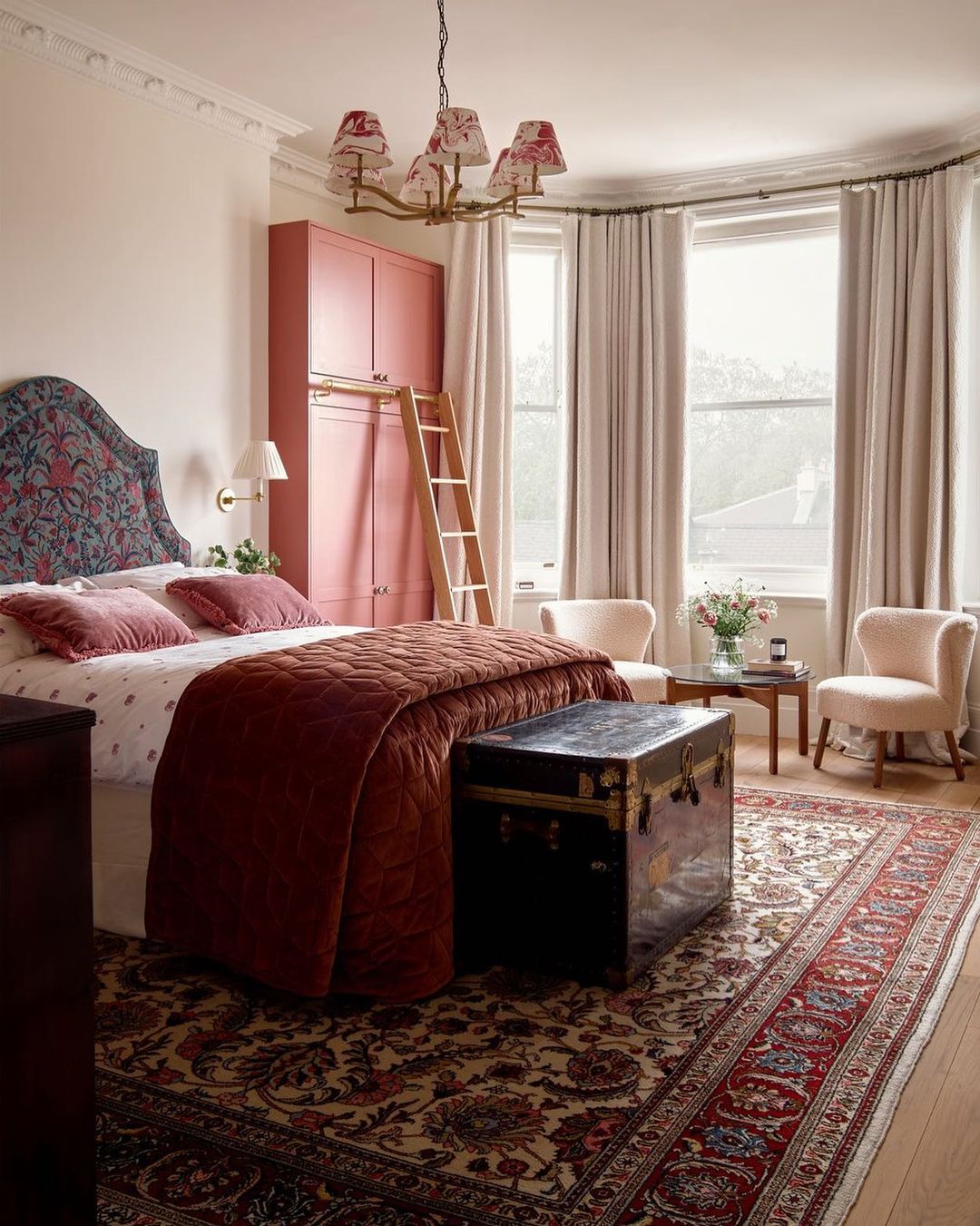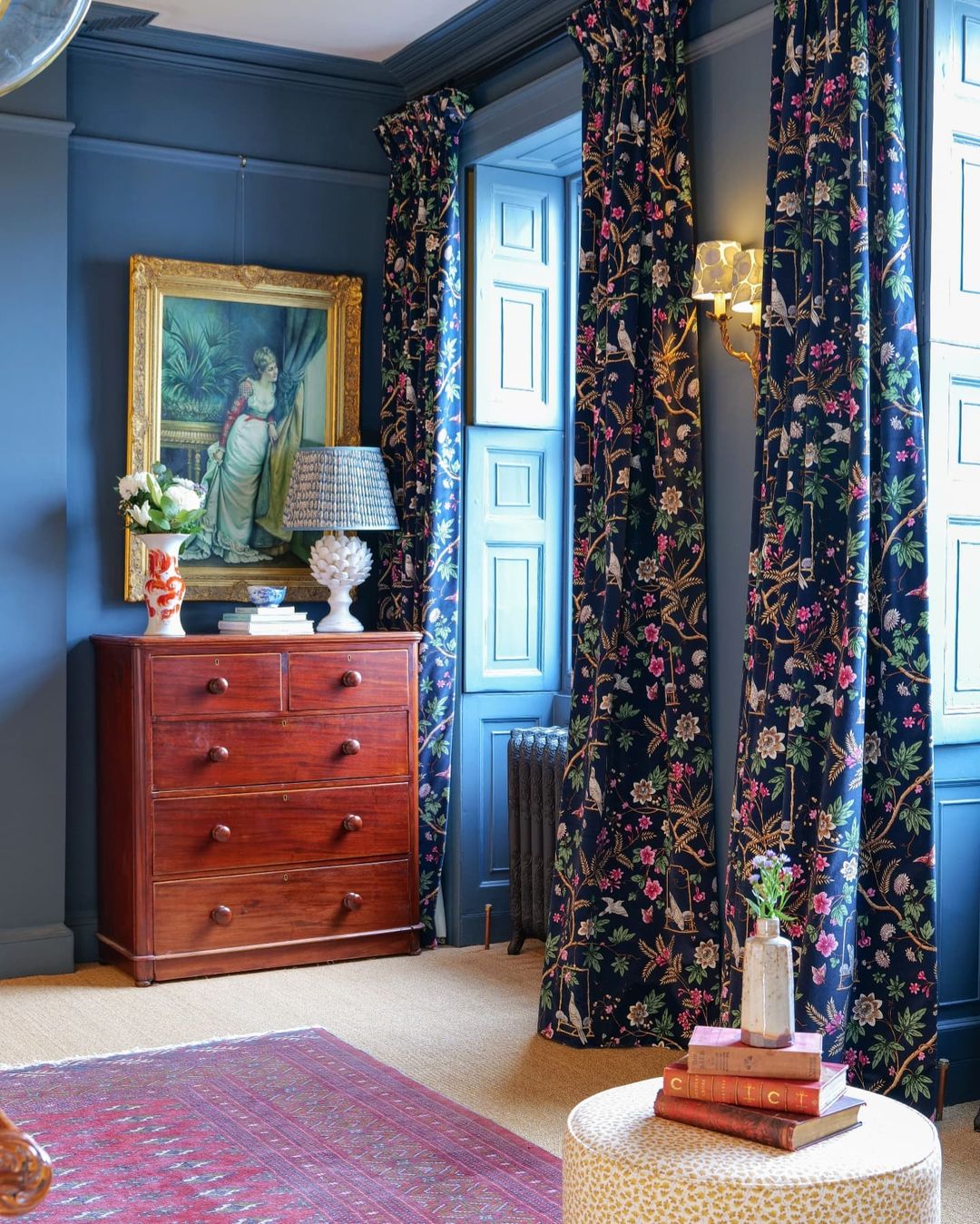
It’s a quick, easy and fun way to put some oomph into your interior decor: change up your lampshades, and mix and match colour, pattern and material. Here are some expert tips for getting it right.
Do all the lampshades in a room need to match? Certainly not! Yes, a pair of matching shades on identical table lamps is a beautiful thing (see Pairing table lamps: why, where and how to use matching table lights) but mixing up your shades is a brilliant way to introduce some visual zing to a room. It’s a lot easier and quicker (and affordable) than changing your furniture and wallpaper (not to mention much less fuss to change things back if you find you don’t like it after all).
Lampshades come in a vast range of different colours and patterns, from soft natural tones to bright block colours, gorgeous florals and striking ikat patterns. So whether you want to make a big, bold statement or just liven things up a little, follow these tips and you’ll be mixing and matching like a true interior design expert.
Tip 1: Think about the overall space
When mixing and matching your lampshades, you should think about how you use the space and the kind of atmosphere you want to create, not just the other shades in the room. Do you want to be calm and restful, or loud and lively? Bedrooms, sitting rooms and dining rooms for example all have different purposes, and lampshades, which are often at eye level (floor lamps when standing, table lamps when sitting), have a surprisingly big impact on the feel of a space. So try to think about how your choices will work with your overall design theme, rather than just picking your favourite colours and patterns.
 This room by Salvesen Graham combines patterned gathered shades with a contrasting block colour blue shade, providing visual interest in the neutral scheme. Image: Salvesen Graham
This room by Salvesen Graham combines patterned gathered shades with a contrasting block colour blue shade, providing visual interest in the neutral scheme. Image: Salvesen Graham
Tip 2: Choose lampshades with something in common
The different characteristics of shades are colour, pattern, material, size and shape. It’s generally best to choose lampshades with at least one feature in common, to help bring the look together. So if you’re mixing different patterns and sizes of lampshade you might link them with a single colour theme. Or if you’re using a variety of colours, keep them all the same shape for a harmonious feel.

Subtle shade mixing in this bedroom by Anahita Rigby: the small white empire shade on the wall light sitting nicely against the handmade marbled paper shades in red tanaro on the Abatross chandelier. Image @anahita_rigby
Tip 3: Use different tones of a single colour for a calm effect
For a calm, harmonious feel, try mixing and matching a set of lampshades in a range of different tones of the single main colour. You can still have all sorts of fun with different patterns and styles, but the shades can help tie together the room’s key colour theme.
 Gorgeous hues of blue in this room by Greg Penn, including Pooky’s turkish blue dervish block printed cotton shade (table lamp) and handmade marbled paper in green and blue roya (wall light). Image: @manwithahammer
Gorgeous hues of blue in this room by Greg Penn, including Pooky’s turkish blue dervish block printed cotton shade (table lamp) and handmade marbled paper in green and blue roya (wall light). Image: @manwithahammer
Tip 4: Use an ‘odd one out’ shade for a colour pop
This is a really simple way to get a striking impact: use two matching shades that fit with your visual theme or are neutral, and then a third in a bold colour that completely contrasts with them. This ‘odd one out’ effect is a wonderful way to get your classic colour ‘pop’ into a room.
The yellow shade on the left of this room by Jessica Buckley provides a fantastic colour pop, and a contrast to the two matching blue pattern shades opposite it:
 The yellow pop on the left contrasts with the other empire shades in this room by Jessica Buckley. Photo: Zac and Zac
The yellow pop on the left contrasts with the other empire shades in this room by Jessica Buckley. Photo: Zac and Zac
Tip 5: Mix shade shapes for style surprises
In the normal course of things, a classic lampshade empire or straight empire shape would be used in a more traditional interior design theme, while geometric shapes like squares, rectangles or cones would appear in more contemporary spaces. But why not try breaking that rule, for example placing some very traditional gathered cotton empire shades in an otherwise modernist or minimalist setting? You may be pleasantly surprised by the effect.
(Find out more about different lampshade styles here: A guide to styles and shapes of lampshade.)
Tip 6: Mix up materials for texture and visual depth
In interior design texture is how something ‘feels to the eye’: you can create layers of texture by mixing and contrasting different materials in a room – and lampshades are a perfect way to do it. How about a mash-up of smooth card, luxuriously soft velvet and natural rattan?
 Texture galore: rattan shades provide a gorgeous textural contrast with hard, shiny materials like marble and brass.
Texture galore: rattan shades provide a gorgeous textural contrast with hard, shiny materials like marble and brass.
Tip 7: Keep experimenting
In the end, interior design rules are really 'more what you’d call guidelines'. Sometimes all sorts of colour and shape and pattern combinations that shouldn’t work in theory turn out to be absolutely marvellous in practice. So keep experimenting, trying out different ideas, and mix and match away to your heart’s content – if nothing else, it’s terrific fun…. And do share your rooms with us on Instagram (@pookylights), we love to see your creations!
Of course, one key requirement for all this is that you’ll need plenty of lamps: table lamps, floor lamps, ceiling lights and ideally a few wall lights too – and you can always throw in a portable cordless lamp or two into the mix. You can also use our clever website feature to mix and match lamp bases and shades to your heart's content. Enjoy!
Browse all Pooky’s beautiful designer lampshades here.
See also:
How to choose a lampshade - the complete guide
An interior design lover’s guide to Ikat lampshades
Pairing table lamps: why, where and how to use matching table lights




